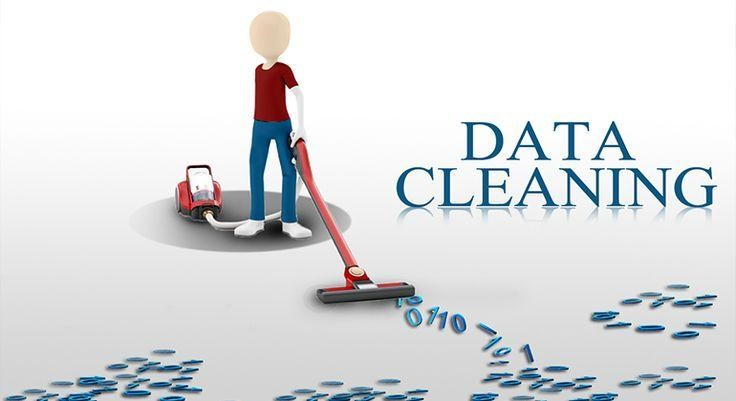What Is Data Cleaning And How It Is Done?
What Is Data Cleaning And How It Is Done?
When data scientists talk about “cleaning up” data, it’s hard to interpret it literally. It makes no sense because data scientists actually don’t clean data. Data cleaning makes a data set useful by removing wrong and changing irrelevant values. It’s a preliminary stage of the very useful process of data mining, which you can be familiar with after reading this post.
What is data cleansing? Why is it important and how do data scientists clean data?
What Is Data Cleansing?
Data cleaning is the detection and elimination of errors and inconsistencies in the data to improve the overall quality of the data.
When it is necessary to integrate multiple data sources, for example, in data warehouses, unified database systems, or global information systems on the Internet, the need for data cleaning increases significantly. This is because sources often contain redundant data in different views. To ensure access to consistent data, it is necessary to combine different data representations and eliminate duplicate information.
Data cleanup is when a data scientist removes incorrect and duplicate values from a dataset and ensures that all values are formatted the way they want. Data cleanup is so-called because it involves cleaning up “dirty data”.
Rarely, does the raw data come in the form of a neatly packaged file containing everything you need to do with the dataset. That’s where cleaning comes in handy, check a detailed guide about data preprocessing here. With its help, the data processing specialist learns more about what data included in the dataset, how it is formatted, and what data is not available.
Why Is Data Cleansing So Important?
Data cleansing helps people working in data science improve the accuracy of their findings. The data scientist’s job is to find answers to questions using the data. If a data scientist is working with incorrect data, their output is unlikely to be accurate.
Having a clean data set means that the data scientist can move forward with the analysis. Knowing that he won’t have to go back and correct formatted or delete inaccurate values.
Ultimately, the data scientist wants their data set to make sense and include all the data. They need to draw a reasonable conclusion to a question.
How Do You Clean Up The Data?
Every data scientist follows their own data cleaning procedure. Many organizations have their own standard rules. Ensure that the data set cleaned before using it in any data analysis.
Review Missing Data
Data analysts want to make sure that all the data needed for analysis is ready before they start their work. If the data is not available in the dataset, the data analyst can change his plan so that he does not rely on this data. It needs to be considered. Because it can change the conclusions that a data processing specialist can make.
A data processing specialist may decide to calculate the missing values based on existing data. For example, if a data processing specialist needs an average number, he can calculate it using a program. They do not need to remove from their analysis any analysis that depends on the average value.
Remove Useless Data
Some of the data does not add value to the data set. Although it can be useful to have more data, some data points may distract the engineer during the analysis.
Before the analysis begins using the data analysis tools, the data scientist will remove all data not relevant to their research. It will reduce the size of their data set, thus making it easier to work.
Sometimes, you may have some irrelevant data that needs to be removed. Suppose you want to predict the sales volume of a magazine. You are looking at a dataset of a magazine ordered last year from Amazon. You notice a functional variable called “font” which records the font used in the book. It is a very irrelevant feature that won’t help you predict the sales volume of the magazine.
Eliminating these unnecessary observations will make the data easier to learn and help to prepare machine learning models.
Dirty data includes any errors that should not be there. Repetition occurs when you focus data on same points. If you have many copies, this can cause your machine learning model to lose its training.
To handle dirty data, you can either remove or replace them (e.g., convert the wrong data points to the right data points).
To solve the duplication problem, remove it from the data.
Remove Repetitive Data
When a dataset is collected, there is a chance that it will contain repetitive records. It can happen if the dataset is not validated when it’s collected or if multiple datasets are combined.
Removing repeating data ensures that the conclusions based on the correct values. If repetitive data should exist in a data set, it may bias one conclusion over the other. It will significantly affect the accuracy.
Processing Emissions Data
A data set may contain emission values. There may be a single blank value or a corrupted record. The data analyst will examine the data set and make sure there are no outliers. If there are outliers, there are two options. The data analyst can remove the outliers from the data set. It is likely if the outlier value has a low chance of being accurate. The data specialist can also decide to double-check the value. It allows checking for data entry or collection errors before eliminating the value.
Conclusion
Data cleansing is a fundamental part of the data analysis process. It occurs after data collection and before analysis. During the cleaning process, the data scientist will work to ensure that the data set is valid, accurate, and includes all necessary values.
Without data cleaning, the data scientist would have to switch between analyzing the data set and fixing problems with the underlying data. It could confuse the analysis process to the point that the conclusion would lose its accuracy.
Data cleansing is a component of organizing the data management process. Now you know more about this process, and you are ready to learn more advanced concepts in the machine.




Comments
Post a Comment